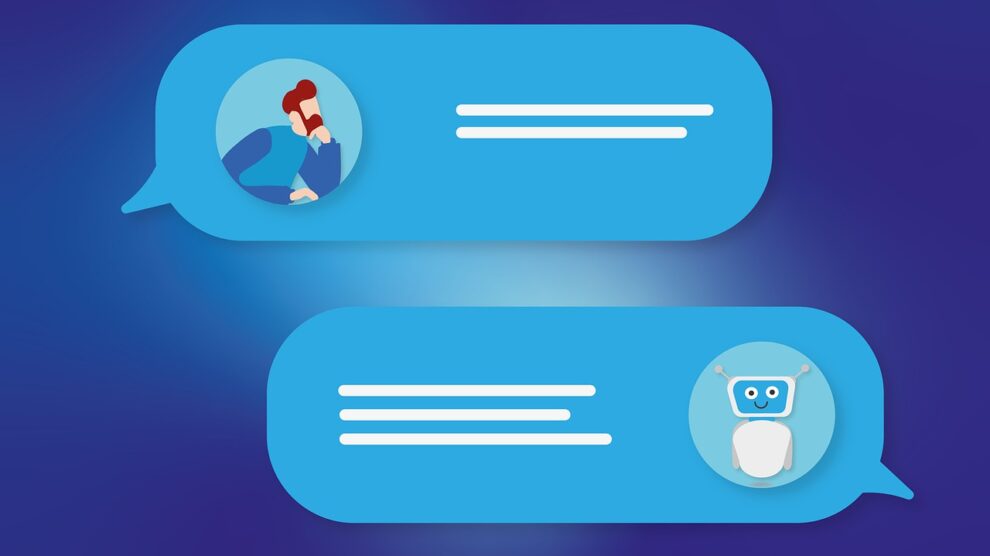An increasing number of customer-facing positions are being replaced with virtual agents powered by conversational AI. As decision-makers, we must analyze the impact that conversational AI will have on brand image and take an active approach to prevent any negative effects. At Master of Code, we’ve been researching a human-centric conversation design approach in order to develop chatbots that do a better job of reflecting their company’s core values and corporate culture.
In this article, we share our findings on the use of conversation design to reflect your company’s culture in virtual conversations with customers, using chatbot persona, unique brand voice, and more.
Transitioning Away from Customer-Facing Employees
With the rise of eCommerce, companies have been transitioning away from customer-facing employees for more than a decade. There have been different rationales behind this shift including online shoppers not needing human assistance anymore and of course, the cost benefits.
However, with this decision came two options: first, companies could simply remove customer-facing employees without installing another mechanism in their place, and second, companies that replaced customer-facing employees with conversational AI.
Furthermore, this decision wasn’t simple or straightforward. In the early 2010s, commercially available artificial intelligence was nowhere as advanced as it is today and so many companies chose not to deploy it. Additionally, there were certain demographics that did not want any assistance, robotic or human.
But over a decade many things have changed, including the following trends:
- conversational AI has become extremely smart
- the demographic that did not want any assistance has shrunk and as the upper age limit of internet users increases, assistance has become crucial once again: older age groups
In essence, removing customer-facing employees without replacing them with a mechanism such as virtual agents (chatbots) is no longer a viable strategy in 2021.
But there is still one question, why conversational AI became the best alternative to human assistance, performing even better in some cases? The long answer to that question can be found in the technological advancements of conversational AI and recent changes in consumer behaviorisms.
But in short, the main reason why conversational AI is the best solution to companies transitioning away from customer-facing positions lies in the benefits it provides, including:
- AI chatbots have become far more economical
- Computer code is more controllable, and thus more reliable.
- Machine learning and the ability for chatbots to “self-learn” has opened up thousands of new possibilities.
We’ve established that by deploying conversational AI solutions, companies can provide assistance to a very large demographic and save money while doing so. But we still need to understand why it’s important to involve brand identity, values, and culture into your chatbot mix.
How Conversation Design Better Showcases Your Company Culture?
At Master of Code, we have a human-centric design approach to conversational chatbots that puts a lot of emphasis on aligning chatbots with their brand and company culture. This involves focusing heavily on a few aspects of conversation design, including but not limited to visual branding, personality, engagement methods, human intervention, and in some cases, even monetization.
Let’s take a closer look at some of these aspects that are critical for conveying company culture and values.
Designing Better Bot Personas
Designing a chatbot persona for your bot is similar to giving the chatbot a character or personality. Even before you can begin coding or mapping out early conversations, you need to decide on your conversational agent’s personality. As with humans, a bot’s personality refers to its set of qualitative characteristics that make it unique. These characteristics should ideally be similar to your brand archetype and voice.
And just like human personalities are invisible, bot personas too, are abstract. They are ideas that cannot be “codified” but do dictate what the code/conversation will be like. Some of the factors to take into consideration when creating a bot persona include:
- social attributes of the environment
- Type of audience
- Intended purpose of the chatbot
- Runtime variations, if the chatbot is context-driven
- Social acceptance
Designing a Voice Chart
As you explore the aforementioned factors, you should be able to find similarities between your own brand values and these factors, such as your target audience. Here’s an example:
As a fresh new startup catering to graduates, you may realize that both your audience and your company are progressive, open-minded, and happy to challenge the status quo. Now the question is, how do you reflect these values in a conversation without sounding unnatural. Well, one way could be to talk more casually and even using emojis.
On the contrary, if you’re an enterprise with a very formal brand archetype, follow strict grammar, punctuation, and avoid small talk – straight to the point.
You can then use this information to create a voice chart that contains a set of decision-making rules and creative guidance for designers and copywriters. Here’s a voice chart with some more examples of how company values and culture translate to conversation design:
In practice, your voice charts should be more complex than this example but this is nonetheless a good starting point.
Visual Branding
Visual branding involves a lot of decision-making related to the meta aspects of the interface. Designers want to ensure the logo of the chatbot is consistent with the service it provides and the company’s logo. In many cases, the company logo can be used as the chatbot avatar but it’s not ideal if you plan on deploying different chatbots.
Additionally, stickers, images, animations, and color schemes should also be consistent with the company’s overall branding.
Monetization
Every chatbot can be monetized but not all should be. Chatbots for premium/luxury brands can have a paid subscription but a chatbot for an NGO that is behind a paywall may be out of place and not representative of the company’s bigger goals.
Human Intervention
Chatbots are designed with varying degrees of potential human intervention to:
- resolve ambiguity
- provide supervision
- error escalation
- facilitate conversations and workflows
The exact extent of this intervention is also a reflection of your company goals and values.
The Tone of Voice: How to Craft It and Why It Matters
Your chatbot would also require a tone of voice, which is highly influenced by the brand archetype and brand voice. When choosing the tone of voice, we want to make a conscious attempt at aligning the chatbot with the rest of the brand image. This means avoiding any unintended bias or meanings. Because humans have a difficult time understanding tone via the written word alone which lacks tone, volume, intonation, and rate of speech – all things that carry a great deal of information.
For instance, the most common “generic” tone of voice used by chatbot developers, the sterile, robotic voice faces this problem. It may be precise and to the point, but it is also devoid of all human emotions. This is an even bigger problem when the company’s brand archetype is upbeat and/or friendly as it creates a discrepancy in the brand image – a communicative dissonance, which is similar to the well-studied psychological phenomenon related to cognitive dissonance – something we must try to avoid.
Instead, you should analyze your brand voice through your website copy, press releases, newsletters, and business messaging.
One very important distinction to make here is that your chatbot’s tone of voice doesn’t have to be the exact same but rather close enough. As you take into consideration the goal of your marketing campaign, the purpose of the chatbot, and the target audience, your tone of voice might develop its own unique quirks – and that’s completely fine.
Why Is It Important to Showcase Your Company Culture?
As a conversational AI solutions provider, we are often asked if a company is deploying AI chatbots for a certain job, why not just stop at that? Why go the extra step and involve culture and values? To answer this, we have to go back to our previous comparison with customer-facing employees.
Like the employees, chatbots are an extension of the company. This means that the “way” a chatbot talks is always associated with the qualities of the brand it represents. And by deliberately adopting a design process where company culture is a major consideration, we’re achieving three goals:
- creating the “model” employee with all the right qualities
- choosing how our (potential) customers view us
- modifying AI speech depending on who the user is
The last point might be confusing, after all, there is usually only one end-user, the customer – usually, but not always.
Today, conversational AI is being used in not just customer-facing positions but also internally. One of the most popular implementations of AI chatbots is in Human Resources (HR). For instance, in 2018, L’Oreal launched its AI-powered chatbot to improve its recruitment process. The chatbot managed to significantly improve candidate experience and was an overall huge success for L’Oreal.
Source: Harvard Business Review
Similar solutions are being deployed today and company culture has become a central part of the design process. Value-driven conversation design is not just helpful but critical for chatbots to convey corporate culturebecause it not only tells potential employees what it’s like to work for your company, but also shows that the company cares for its employees, which has been proven to impact the bottom line in a significant capacity.
Wrapping Up…
The art of human-centric conversation design is interesting but also very complex. Hopefully, this article did a job of conveying the complexity and intricacy that goes into designing three-dimensional chatbots that achieve more than just assist users – like being the ideal representatives of your company’s culture and value.
At the same time, it’s important to not let the complexity discourage you from deploying similar solutions into your business. Despite the challenges, there are tools, services, and best practices that can make the process of building such AI chatbots faster and cost-effective. At Master of Code, we leverage our expertise in conversational AI to do just this.





